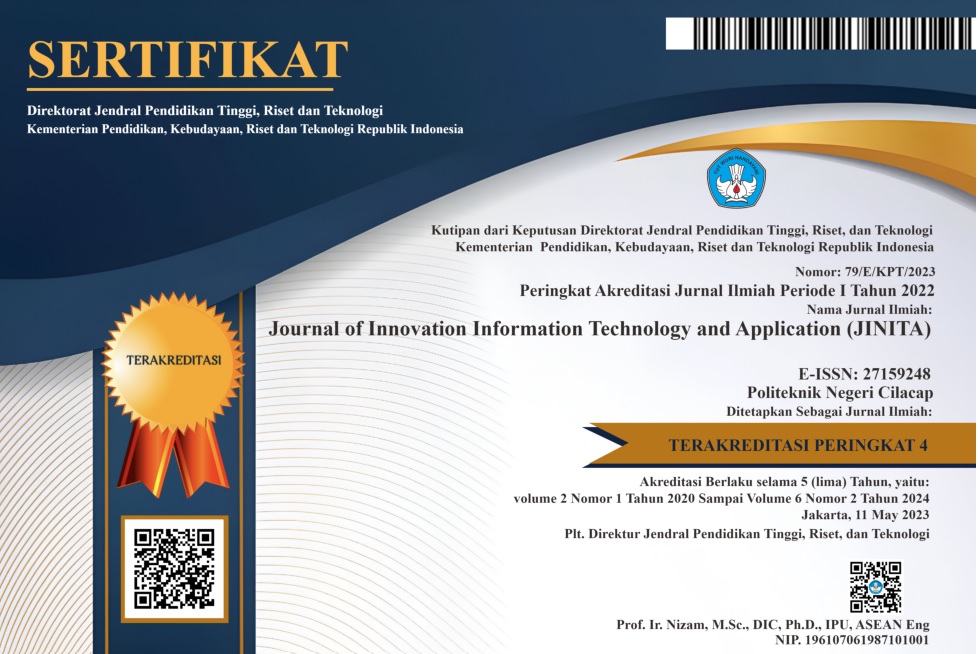A Survey of Applications of Blockchain in Collective Decision-Making Scenarios in Swarm Robotics
 Abstract views: 131
,
Abstract views: 131
,
 pdf downloads: 151
pdf downloads: 151
Abstract
Blockchain is a distributed ledger that was introduced to decentralize monetary systems. However, with time, the applications of blockchain in different realms have been identified. Swarm robotics is a field that combines swarm intelligence and robotics to solve real-world problems that cannot be solved by monolithic robots. Collective decision-making is one of the major behaviors implemented by swarm robotics. This study analyzes existing literature on the applications of blockchain in the collective decision-making scenarios in swarm robotics. Consequently, this study introduces a novel taxonomy to study the different applications effectively. The taxonomy categorizes existing literature into (i) application of blockchain in other areas of swarm robotics, (ii) application of blockchain in continuous collective decision-making scenarios, (iii) application of blockchain in discrete collective decision-making scenarios, (iv) application of blockchain in other discrete collective decision-making scenarios, and (v) application of blockchain in the collective perception scenario. Finally, the limitations of existing work such as excessive resource consumption and violation of swarm robotics principles are discussed.
References
S. Nakamoto, “Bitcoin: A Peer-to-Peer Electronic Cash System,” 2009, [Online]. Available: www.bitcoin.org
G. Beni, “From swarm intelligence to swarm robotics,” Lecture Notes in Computer Science, vol. 3342, pp. 1–9, 2005, doi: 10.1007/978-3-540-30552-1_1.
E. Şahin, “Swarm robotics: From sources of inspiration to domains of application,” Lecture Notes in Computer Science, vol. 3342, pp. 10–20, 2005, doi: 10.1007/978-3-540-30552-1_2.
M. Brambilla, E. Ferrante, M. Birattari, and M. Dorigo, “Swarm robotics: A review from the swarm engineering perspective,” Swarm Intelligence, vol. 7, no. 1, pp. 1–41, 2013, doi: 10.1007/s11721-012-0075-2.
M. Crosby, “BlockChain Technology: Beyond Bitcoin,” Applied Innovation Review Issue, no. 2, 2016, [Online]. Available: http://scet.berkeley.edu/wp-content/uploads/AIR-2016-Blockchain.pdf
T. Krishnamohan, K. Janarthanan, P. P.R.L.C, and R. A.T, “BlockFlow: A decentralized SDN controller using blockchain,” International Journal of Scientific and Research Publications (IJSRP), vol. 10, no. 3, p. p9991, 2020, doi: 10.29322/ijsrp.10.03.2020.p9991.
S. Karthik, N. P. Chandhar, M. Akil, S. Chander, J. Amogh, and R. Aditya, “Bee-Bots: A Blockchain Based Decentralised Swarm Robotic System,” 2020 6th International Conference on Control, Automation and Robotics, ICCAR 2020, pp. 145–150, 2020, doi: 10.1109/ICCAR49639.2020.9108053.
J. A. Tran, G. S. Ramachandran, P. M. Shah, C. B. Danilov, R. A. Santiago, and B. Krishnamachari, “SwarmDAG: A Partition Tolerant Distributed Ledger Protocol for Swarm Robotics,” Ledger, 2019, doi: 10.5195/ledger.2019.174.
V. Strobel, E. Castelló Ferrer, and M. Dorigo, “Blockchain Technology Secures Robot Swarms: A Comparison of Consensus Protocols and Their Resilience to Byzantine Robots,” Frontiers in Robotics and AI, vol. 7, p. 54, May 2020, doi: 10.3389/frobt.2020.00054.
P. K. Singh, R. Singh, S. K. Nandi, K. Z. Ghafoor, D. B. Rawat, and S. Nandi, “An efficient blockchain-based approach for cooperative decision making in swarm robotics,” Internet Technology Letters, vol. 3, no. 1, p. e140, Jan. 2020, doi: 10.1002/itl2.140.
T. T. Nguyen, A. Hatua, and A. H. Sung, Blockchain approach to solve collective decision making problems for swarm robotics, vol. 1010. Springer International Publishing, 2020. doi: 10.1007/978-3-030-23813-1_15.
M. Brambilla, A. Brutschy, M. Dorigo, and M. Birattari, “Property-driven design for robot swarms: A design method based on prescriptive modeling and model checking,” ACM Transactions on Autonomous and Adaptive Systems, vol. 9, no. 4, 2014, doi: 10.1145/2700318.
A. Scheidler, A. Brutschy, E. Ferrante, and M. Dorigo, “The k-unanimity rule for self-organized decision-making in swarms of robots,” IEEE Transactions on Cybernetics, vol. 46, no. 5, pp. 1175–1188, 2016, doi: 10.1109/TCYB.2015.2429118.
V. Strobel, E. C. Ferrer, and M. Dorigo, “Managing Byzantine Robots via Blockchain Technology in a Swarm Robotics Collective Decision Making Scenario,” in International Conference on Autonomous Agents and Multiagent Systems, May 2018, vol. 9. Accessed: Jun. 26, 2021. [Online]. Available: www.ifaamas.org
G. Valentini, D. Brambilla, H. Hamann, and M. Dorigo, “Collective Perception of Environmental Features in a Robot Swarm,” in Swarm Intelligence, 10th International Conference, ANTS 2016 Brussels, Belgium, September 7–9, 2016 Proceedings, 2016, vol. 9882 LNCS, pp. 65–76. doi: 10.1007/978-3-319-44427-7_2.
A. L. Christensen, R. O’Grady, and M. Dorigo, “From fireflies to fault-tolerant swarms of robots,” IEEE Transactions on Evolutionary Computation, vol. 13, no. 4, pp. 754–766, 2009, doi: 10.1109/TEVC.2009.2017516.
N. Anita and M. Vijayalakshmi, “Blockchain Security Attack: A Brief Survey,” Jul. 2019. doi: 10.1109/ICCCNT45670.2019.8944615.
Copyright (c) 2023 Theviyanthan Krishnamohan

This work is licensed under a Creative Commons Attribution 4.0 International License.
Authors who publish with this journal agree to the following terms:
- Authors retain copyright and grant the journal right of first publication with the work simultaneously licensed under a Creative Commons Attribution License that allows others to share the work with an acknowledgement of the work's authorship and initial publication in this journal.
- Authors are able to enter into separate, additional contractual arrangements for the non-exclusive distribution of the journal's published version of the work (e.g., post it to an institutional repository or publish it in a book), with an acknowledgement of its initial publication in this journal.
- Authors are permitted and encouraged to post their work online (e.g., in institutional repositories or on their website) prior to and during the submission process, as it can lead to productive exchanges, as well as earlier and greater citation of published work (See The Effect of Open Access).
















